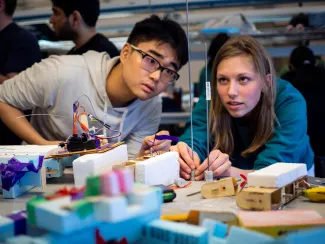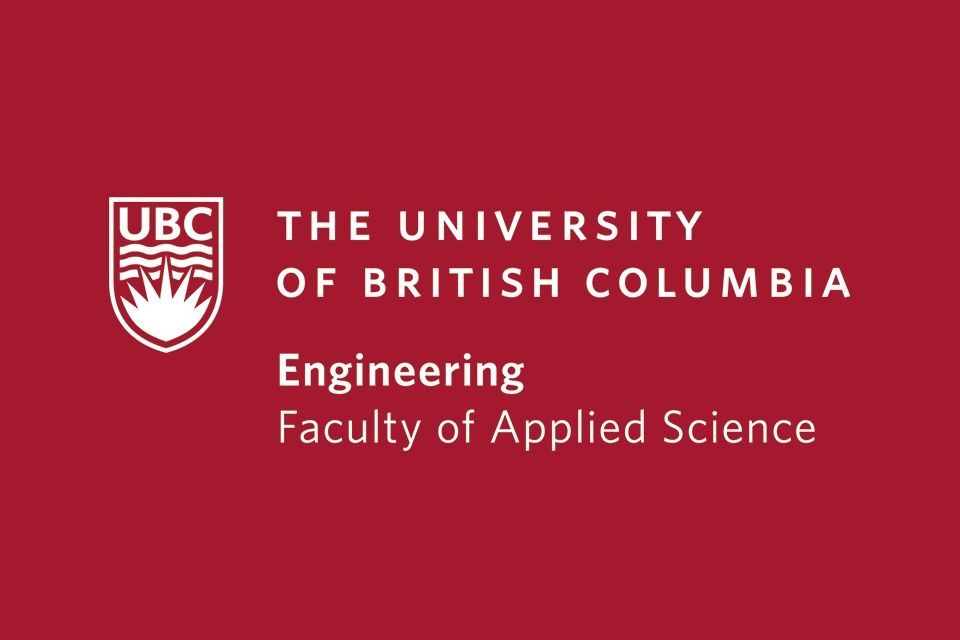“We always try and identify problems where we can have a meaningful impact. Developing better tools or techniques for orthopedic surgeries can make it more likely that patients will have restored or improved function, better mobility, and less pain.”

- Program:
- Campus: Vancouver
Education: BASc (UBC), MASc (UBC), PhD (MIT and Harvard), Postdoctoral Fellowship (Clemson University and Greenville Hospital System)
What led you to engineering?
When I started my undergraduate degree at UBC I was enrolled in a general first-year science program. I wasn’t really aware of engineering, but I learned about it from some of my friends and realized that I was interested in applying science to solve problems. I’d always liked practical things, like building models or working on my bike or car, and engineering seemed to me a way I could pursue those interests. Mechanical engineering appealed to me because it brings together so many engineering disciplines and it seemed like you could take your career in many different directions.
It was a bit of everything – from mechanics and control theory to electronics and computer programming. I liked that it was a broad and flexible discipline.
Tell us about your research.
Through my Surgical Technologies Laboratory based at Vancouver General Hospital, I collaborate with orthopedic and other surgeons to improve diagnosis and treatment of musculoskeletal disorders by drawing on integrative approaches that include image processing, mechatronics, biomechanics and machine learning.
On the diagnosis side, one of biggest projects my lab is working on right now is on developmental dysplasia of the hip, which happens in about two to three percent of babies.
Being properly diagnosed is important, as untreated hip dysplasia can lead to early osteoarthritis and the need for a hip replacement in your 20s. The current method of diagnosis uses two-dimensional imaging that’s not always reliable. We’ve demonstrated that three-dimensional imaging of the joint provides much more accurate measurements, and we’re using AI processing to produce the most reliable measurements possible.
Other research is trying to make it easier for surgeons to do their work.
For example, surgeons currently use a type of x-ray machine to get an image of the area they are operating on. Our work is addressing the limitations of these machines so that surgeons have better images and greater control when doing cuts or drilling during operations. These new tools are aimed at minimizing x-ray exposure for the surgical team and patient, reducing surgical time and will hopefully lead to better patient outcomes.
Surgical Technologies Laboratory
Why is this research important?
We always try and identify problems where we can have a meaningful impact.
Developing better tools or techniques for orthopedic surgeries can make it more likely that patients will have restored or improved function, better mobility and less pain.
These solutions can also improve operating room efficiency and reduce health-care costs.
Why should students choose UBC?
UBC has a strong med-tech ecosystem that includes a medical school and top hospitals. Undergrads in Mechanical Engineering benefit from our MECH 2 program, which is a really unique curricular experience. This is a highly integrated program where students take five courses as a cohort over the whole year, learning the theory and practice of mechanical engineering by starting off with a month-long focus on practical skills and moving on from there to work on some great projects. And in later years, we have unique pathways such as our CREATE-U program that lets students get a taste of what it’s like to be a researcher while being part of a cohort of their peers who can support them and share the experience.










